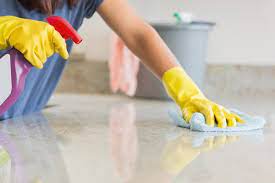As the proverbial dust - resulting from the pandemic panic - slowly settles, people are becoming more health conscious to possibly withstand any more close encounters with the viral kind in this lifetime. However, what we fail to notice is that threats to our health doesn’t only exist around us. It might be slowly affecting our well-being inside our homes.

It’s in the same products that we use to sanitise our environment, clean our surfaces and keep our houses fragrant. So before we continue to increase the threat to our families and loved ones, here are some toxic elements that we should avoid:
- PHTHALATES – they can be found in a lot of things inside the house it was initially created as a plasticizers or substances added to plastic to increase flexibility, durability, transparency and longevity. It can be found in toys, pharmaceuticals, blood bags and tubing, personal care products such as polish, hair spray, after shave lotions, shampoos, perfumes and a hundred more. Household products like air fresheners and soaps may have the word “fragrance” in their ingredients – there’s a possibility that it may contain this substance.According to medical research, phthalates are known endocrine disruptors which may cause reduced sperm count, change in sex hormone levels, altered growth of genitals, it can damage your lungs, kidneys and the reproductive system.
- TRICLOSAN – sadly they’re found in dishwashing detergents, hand soaps and other personal care products labelled “antibacterial.” It's an aggressive antibacterial agent that can promote the growth of drug-resistant bacteria. It may disrupt endocrine function and may cause cancer. Further exposure to triclosan may also affect our healthy antibodies.
3. 2-BUTOXYETHANOL – is a widely used solvent and can be found in your windows, kitchens, and multi-purpose cleaners. When inhaled in high levels, it does not only cause sore throat, it can contribute to narcosis, pulmonary edema and severe liver and kidney damage.
- QUATS – also known as quarternary ammonium compounds and they are usually found in softener liquids and sheets and most household cleaners labelled “antibacterial.” Like triclosan, it may contribute to the breeding of antibiotic-resistant bacteria. More so, it’s a skin irritant that causes contact dermatitis. It is also suspected to cause respiratory disorders.
- PERC - or perchloroethylene is a chemical found in dry cleaning solutions, spot removers, carpet and upholstery cleaners. It is a neurotoxin and a possible carcinogen. It may also cause dizziness and loss of coordination when inhaled in large amounts.
- FORMALDEHYDE – also known as methanal, methyl aldehyde or methylene oxide is a smelly, colourless, flammable gas used in pesticides, building materials , textiles, cosmetics and some home goods. It’s cancer-causing and is toxic to the skin and the other systems of your body – digestive, immune, nervous, reproductive and respiratory.
- LEAD – can be found in old paint, toys, walls, pipes and in make-up. It is a neurotoxin that can accumulate in the body and can cause brain damage and behavioural issues. Needless to say, it is especially harmful to children.
- PARABENS – are preservatives in pharmaceuticals and cosmetics. It can be found in shampoo, toothpaste, moisturizers and shaving gels. They are endocrine disruptors that can be absorbed through the skin and have been linked to cancer.
- PFC’s – or periflourinated chemicals are found to have immense damage to our immune and reproductive systems. It may cause thyroid issues, high cholesterol, hypertension and birth defects. Accumulated exposure has been linked to cancer and thyroid issues.
So you’ve rolled your eyes and said wow a couple of times. But these are facts gathered through research and test results. But do you have to throw out what you have? Not necessarily – you can do the following:
- Make sure that there Is proper air flow when cleaning your house using these items.
- Use face masks and gloves when using toxic chemicals
- Learn to make it a habit to read the product's Safety Data Sheet (S.D.S.) found at the back of the bottle. If the product doesn’t have any, you might want to look for another one to use.
- There are a lot of non-toxic and sustainable way to clean your house and get rid of household germs and bacteria. Watch out for it soon here on AF.
- Slowly migrate your products to non-toxic ones. There’s a lot in the market now from companies who are more concerned about everyone’s well-being.
Happy cleaning!